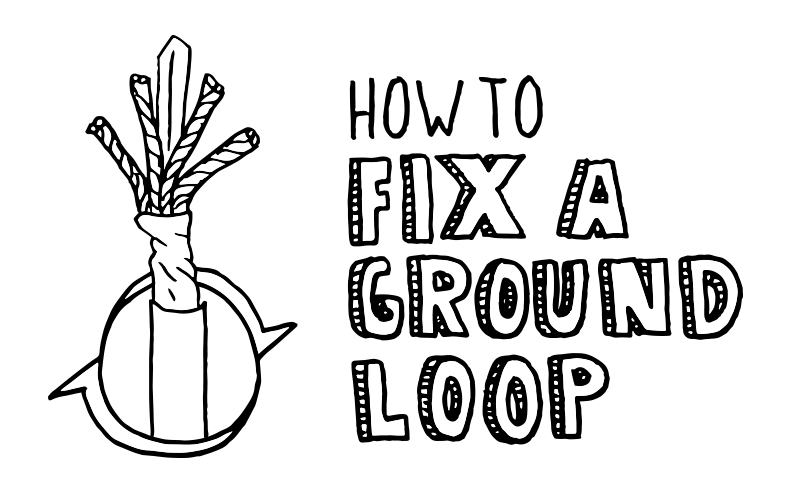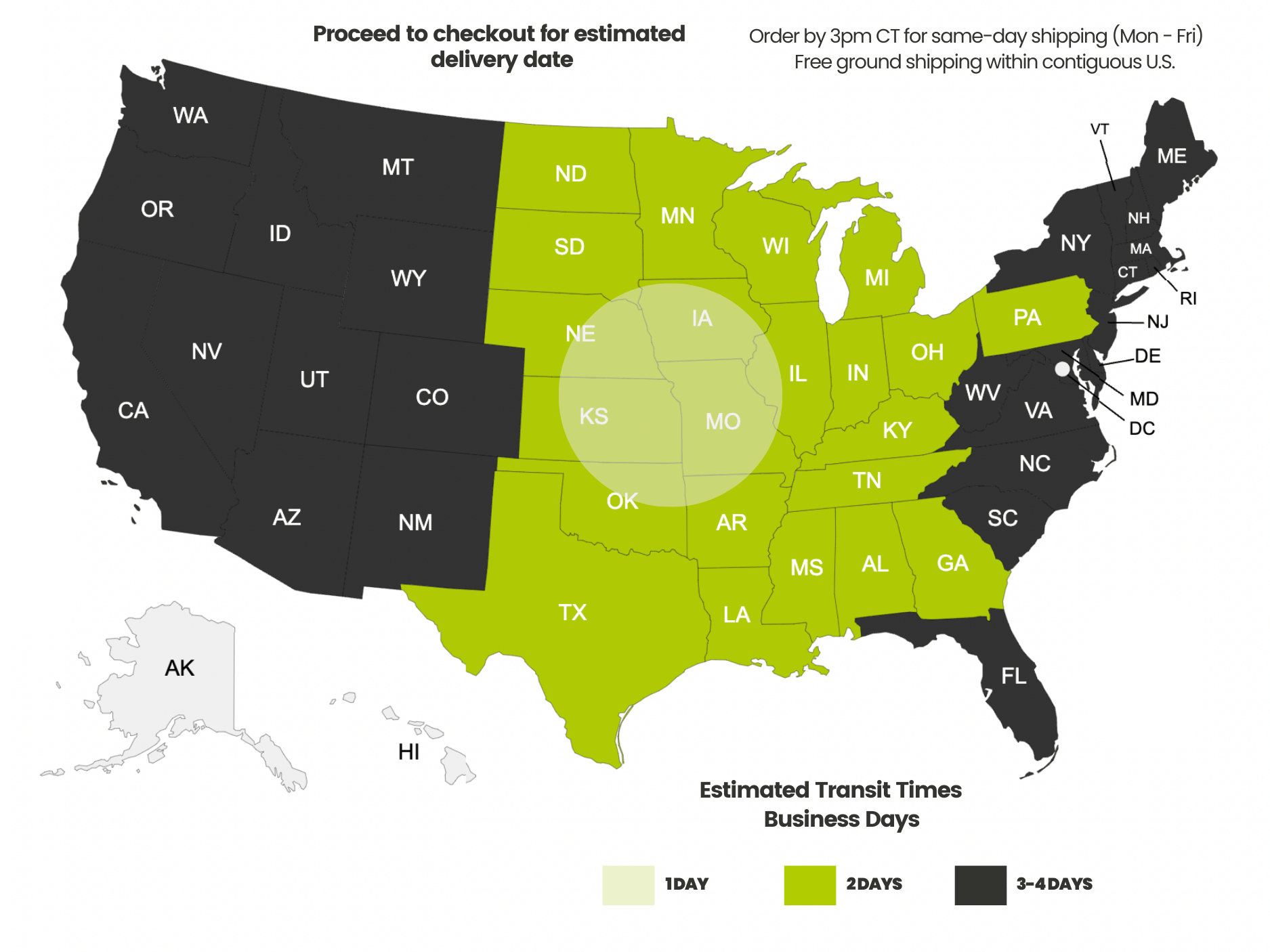Payment methods accepted

How To Fix a Ground Loop
Written by Don Schultz, trueCABLE Senior Technical Advisor, Fluke Networks Copper/Fiber CCTT, BICSI INST1, INSTC, INSTF Certified
Quite often I get questions about how to prevent a ground loop, or how to perform a ground loop fix when using Ethernet cable. It is great that people are reading Shielded vs Unshielded Cable. That is the starting point. Knowing you could run into this issue is half the battle. Fixing or avoiding it is the other half.
What I did not detail in that blog, however, was to show how to avoid a ground loop altogether. I promised I would do so, and here it is.
Take note this blog does not directly address the issue of lightning strikes, which represents the ultimate example of electrostatic discharge. Bonding and grounding in addition to lightning protection should all be considered when installing outdoor Ethernet cable. Please see When Lightning Strikes! Ethernet Data Cable and Lightning Protection for additional installation techniques. The two subjects can become interrelated!
What exactly is a ground loop?
Ground loops may occur when you are running shielded Ethernet cable in the following scenarios:
- The shielded run is between two buildings that are on their own AC mains (meters), or have two or more different sub panels that are separately earth grounded.
- A commercial building has multiple points of ground, but the multiple grounds are not equalized together. This is a defect within the AC ground system, technically. A ground loop occurs when an Ethernet cable has been bonded to these disparate grounds by an unsuspecting low voltage installer. A great example is bonding to building structural steel and also to metallic conduit and then to the actual AC ground system, which is normally a great idea unless all of those bond points are not equalized together into one cohesive system.
- The shielded run goes directly to a device which is grounded separately from the source. Grounding of the shield at the remote device cannot be avoided.
- The home installer is likely to run into the first scenario, such as running an Ethernet cable to an outbuilding (detached garage, for example) that is not equalized to the original structure (house). Professional installers are likely to run into all three of these scenarios, or various subtypes of them.
Do you see the overriding pattern? There are multiple points of grounding that occur in each installation. This has the potential (pun not intended) to create a situation that has the following outcomes:
- Unexplained bit/transmission errors in your network. Worse yet, these errors are typically intermittent and extremely difficult to diagnose.
- Equipment damage (far less likely, but possible)
- Personal injury (extremely unlikely, but a remote possibility in extreme scenarios where very high AC or DC voltages are involved). You might get a nasty burn or jolt.
Two additional take-aways are:
- Ground loops may arise when shielded Ethernet cable is involved, not unshielded
- Ground loops do not require the use of outdoor Ethernet runs. You can have ground loops that form with indoor installations as well!
How and why does this happen?
Electricity is your friend, but it can also harm you. For reasons that only an electrical engineer can explain fully, having multiple points of ground can cause ground potential differences in your cable system. Those ground potential differences are then literally looped back as common mode voltage, and get injected across your Ethernet cable. It’s not the voltage you want--we are not talking about PoE in this case.
Please do not confuse multiple points of bond with multiple grounds. Multiple bond points to the same AC ground system are desirable and add to your shielded cable effectiveness. Where you run into trouble is when you bond to multiple places that are not all equalized (such as two completely different AC systems, for example).
The concept of bonding vs grounding (earthing) is a confusing one for many people. Please read Residential Bonding and Grounding of Shielded Ethernet Cable Systems for a more in-depth explanation than the one provided here. If you are a commercial installer, or just curious, please take a look at Commercial Bonding and Grounding of Ethernet Cable Systems for a more advanced take on bonding and grounding.
What is the solution?
Never run shielded cable? No. That is not the solution. In the blog linked above, there are scenarios when you must use shielded cable. The primary one, and one that I consider inviolate, is when you are running Ethernet cable outside in open air scenarios. Air movement causes electrostatic discharge (ESD) build-up on your cable, especially in the dry seasons. This ESD needs a way to drain off, and this would be via the cable shield/drain wire and your ground. I learned the hard way on this one. The cost? A dead $200 Ubiquiti outdoor Wi-Fi AP.
An exception to this is when you use outdoor grade Ethernet CMX cable attached to the side of your structure. For example, security cameras attached to the side of your house are an installation that does not strictly require shielded Ethernet cable.
The solution is to be aware this situation can occur and mitigate it before you have trouble. Here are two infographics showing common scenarios and how to wire stuff up:
Scenario #1. You are running shielded Ethernet cable between two buildings with multiple subpanels or AC mains involved. This is how you avoid a ground loop!


Take note in the above scenario, Building A. The patch panel should be a shielded patch panel if one is used. If the shielded patch panel has an auxiliary ground wire attachment (most do) then either do NOT hook it up or hook it up to your building’s AC ground wire. Do not separately ground that auxiliary wire to another ground (like a ground rod). You will only create another ground loop. More information about grounding of shielded cable can be found in our blog article, “Residential Bonding and Grounding of Shielded Ethernet Cable Systems.”
Scenario #2. You are running shielded Ethernet cable to a PoE device outside, like a Wi-Fi Access Point (AP), that is grounded where it is installed. This scenario would also apply to a run directly to a device in another building that is separately grounded. In either case, grounding of the shield at the remote site cannot be avoided.


In the above scenario, absolutely none of the outdoor shielded Ethernet cable is grounded inside the source structure. It is bonded to the ground provided at the remote structure. Using unshielded patch cables in the source structure will make sure that a ground loop is avoided.
So, there you have it. This is how to avoid ground loops in two common scenarios. Of course there are more scenarios than the two I described above. When planning your network, judicious use of shielded Ethernet cable will serve you well. Be sure to use shielded where needed, and unshielded where needed. Both types of Ethernet cable have their place. Happy Networking!
trueCABLE presents the information on our website, including the “Cable Academy” blog and live chat support, as a service to our customers and other visitors to our website subject to our website terms and conditions. While the information on this website is about data networking and electrical issues, it is not professional advice and any reliance on such material is at your own risk.




























In scenario #1, would it also be feasible to ground the Building A Shielded Keystone (either with its own grounding rod or direct to building ground) and then use all unshielded cables inside Building A?
Thank you.
Adrian – Yes, that will work if you wish to use the remote building (B) as the path to ground OR you wish to totally isolate both buildings onto their own grounds. In that case, your cable run between the buildings could be direct burial unshielded cable as well. There would be no risk of a ground loop in either scenario.
Hi Don. As always, an excellent and comprehensive write-up on how to avoid ground loops. Your series of articles should be made mandatory reading. !
Thank you.
Albert
Is there any reason scenario one couldn’t be switched around so that shielded cable runs into the remote building and goes into a shielded patch panel and then into the switch/router in the remote building?